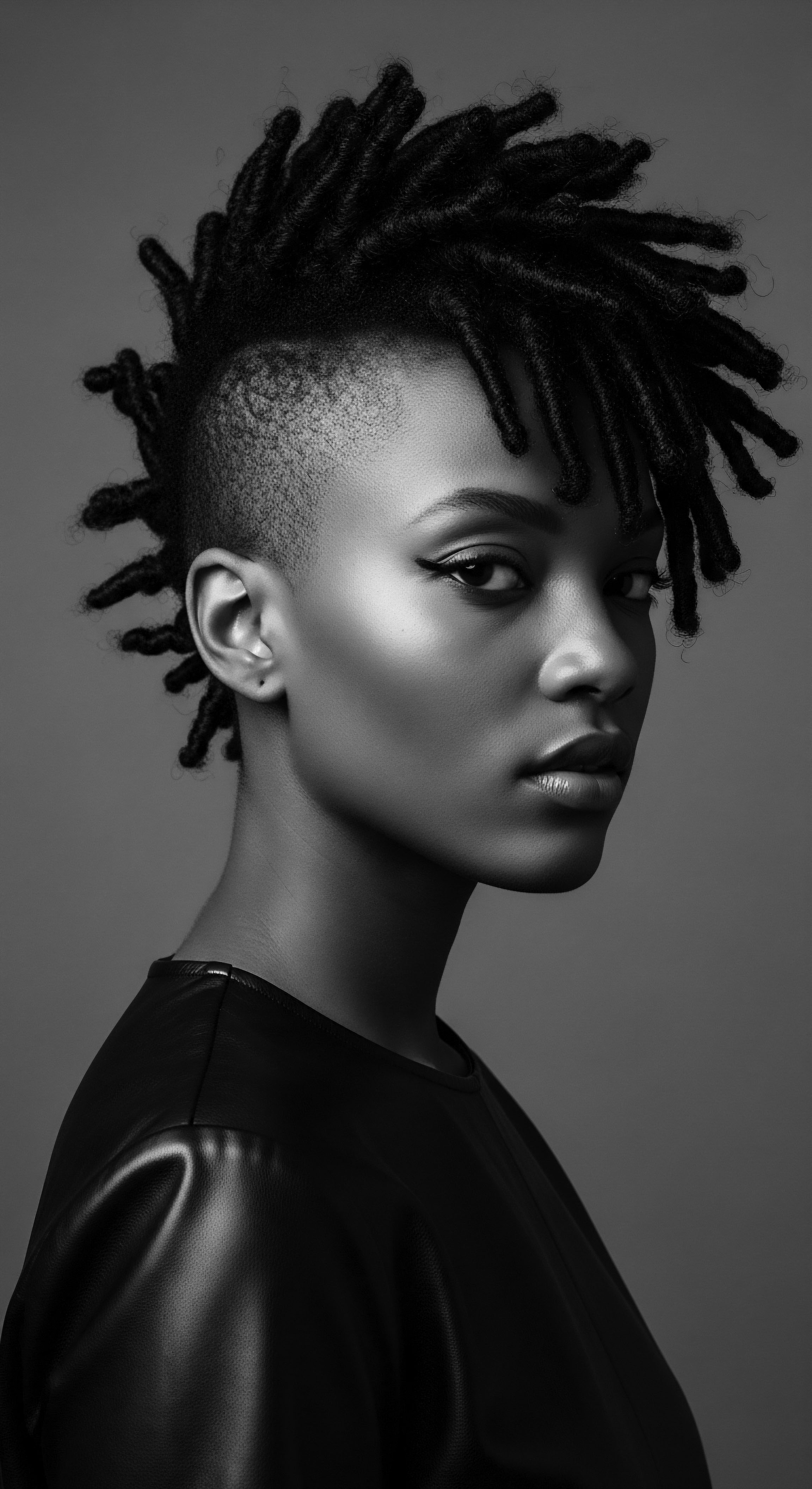
Roots
There is a profound whisper that calls to us from the very fiber of textured hair, a resonant ancestral hum. It speaks not only of present beauty and resilience, but of journeys across continents, of adaptation to the sun’s embrace, and of deep spiritual meaning passed through generations. We embark on a thoughtful exploration, a gentle uncovering of the anatomical wonders distinguishing textured hair, viewing each strand as a living archive, holding secrets of heritage and wisdom within its coil.

The Hair Follicle’s Arc and Ancestral Whispers
The tale of textured hair begins beneath the skin, with the hair follicle itself. The shape of this minuscule organ, embedded within the scalp’s embrace, fundamentally dictates the form a hair strand takes as it emerges. For hair that coils and curls with such distinctive grace, the follicle is not perfectly round, as one might observe in hair of different textures, but rather an elongated, often elliptical or ribbon-like structure. This asymmetry causes the hair shaft to grow in a curvilinear path, twisting and turning upon itself as it ascends.
It is a biological blueprint for the spiral, the wave, the tight coil that defines much of the African diaspora’s hair. This singular characteristic, the curved follicle, is a hallmark of textured hair across various populations.
Consider the evolutionary narrative held within this very shape. Biological anthropologist Tina Lasisi, for instance, has presented compelling research on the thermoregulatory advantages of tightly curled hair, suggesting it served as a critical adaptation for early human ancestors on the hot, dry African savanna. Her work, which involved testing wigs on thermal manikins, indicates that tightly coiled hair creates a unique air pocketing system, shielding the scalp from intense solar radiation while concurrently allowing for efficient heat dissipation from the head. This anatomical distinction, therefore, goes beyond mere aesthetics; it is a legacy of survival, a testament to humanity’s ingenious adaptation to environment.
The elliptical shape of the hair follicle is the primary anatomical characteristic that causes the distinctive coiling patterns of textured hair.
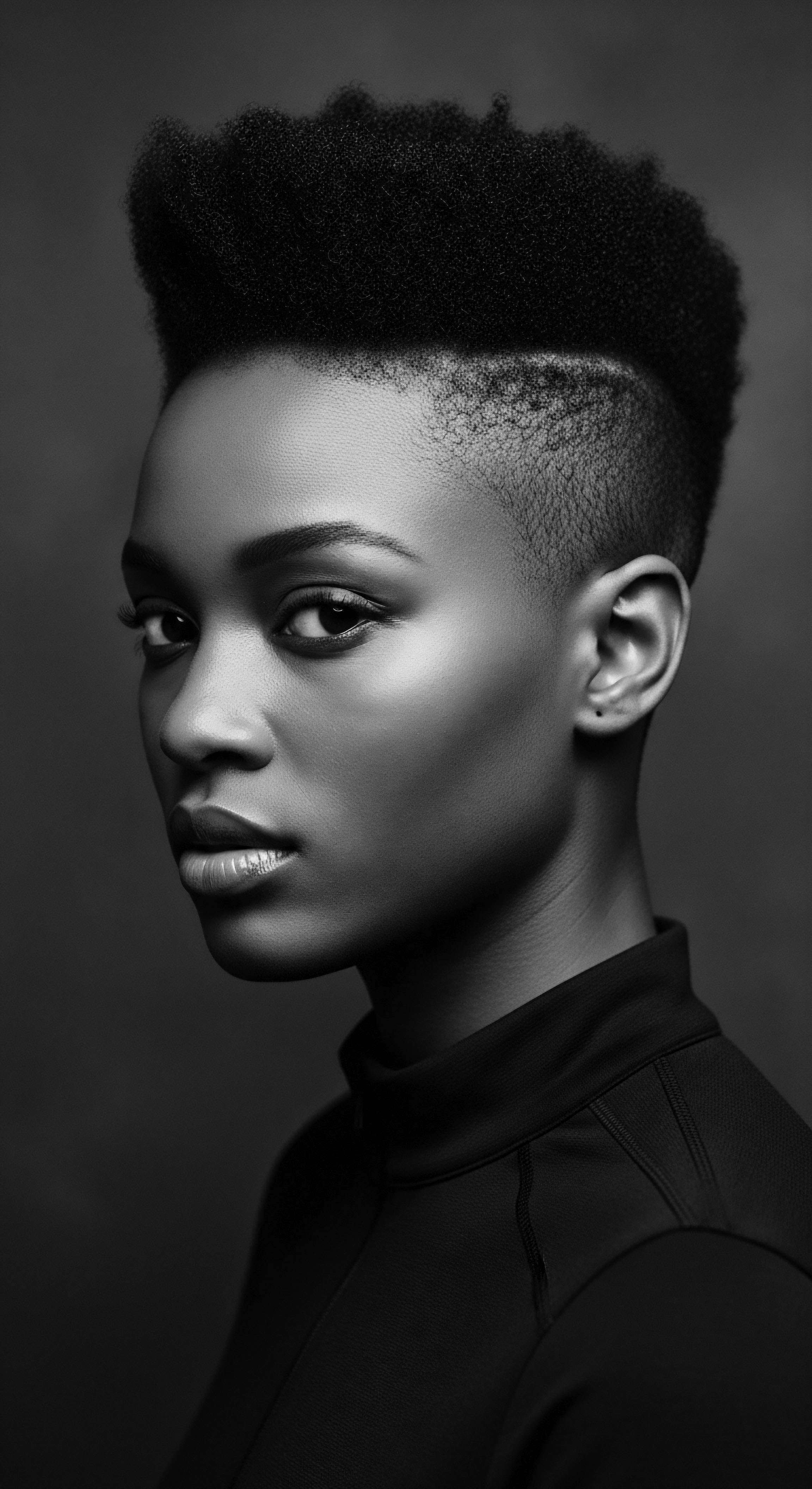
The Strand’s Internal World A Heritage of Strength
Beyond the follicle’s curve, the hair shaft itself, the visible part of the strand, presents its own distinct anatomical features. Three main layers form the hair shaft ❉ the outer Cuticle, the central Cortex, and in some hairs, an innermost Medulla. These layers, though present in all hair types, exhibit specific arrangements and compositions in textured hair that contribute to its unique qualities and care requirements.
- Cuticle Layers ❉ The cuticle, serving as the hair’s protective outer shield, consists of overlapping, flattened cells, much like shingles on a roof. In textured hair, these cuticle scales tend to be fewer in number and may lift more readily due to the hair’s coiled morphology. This natural tendency for the cuticle to be slightly raised can mean less smooth light reflection, contributing to a perceived lack of shine, and a greater predisposition to moisture loss, which speaks to the need for careful, ancestral moisturizing practices.
- Cortical Composition ❉ The cortex forms the bulk of the hair shaft, a realm of tightly packed keratin proteins and melanin granules that determine hair’s strength, elasticity, and color. In textured hair, the cortical cells may be arranged with a degree of asymmetry, contributing to the hair’s natural curl. Moreover, the distribution of melanin, the pigment responsible for hair color, can be quite varied, sometimes appearing clumped or streaked within the cortex, adding to the visual richness of the hair.
- Medulla Presence ❉ The medulla, the innermost core of the hair shaft, is a hollow or spongy region that is not always present in all hair types or even throughout a single strand. When present in textured hair, its structure can be discontinuous or fragmented. The medulla’s exact role in hair texture is still a subject of scientific inquiry, but its presence, alongside the cortex and cuticle, collectively defines the strand’s overall physical properties.
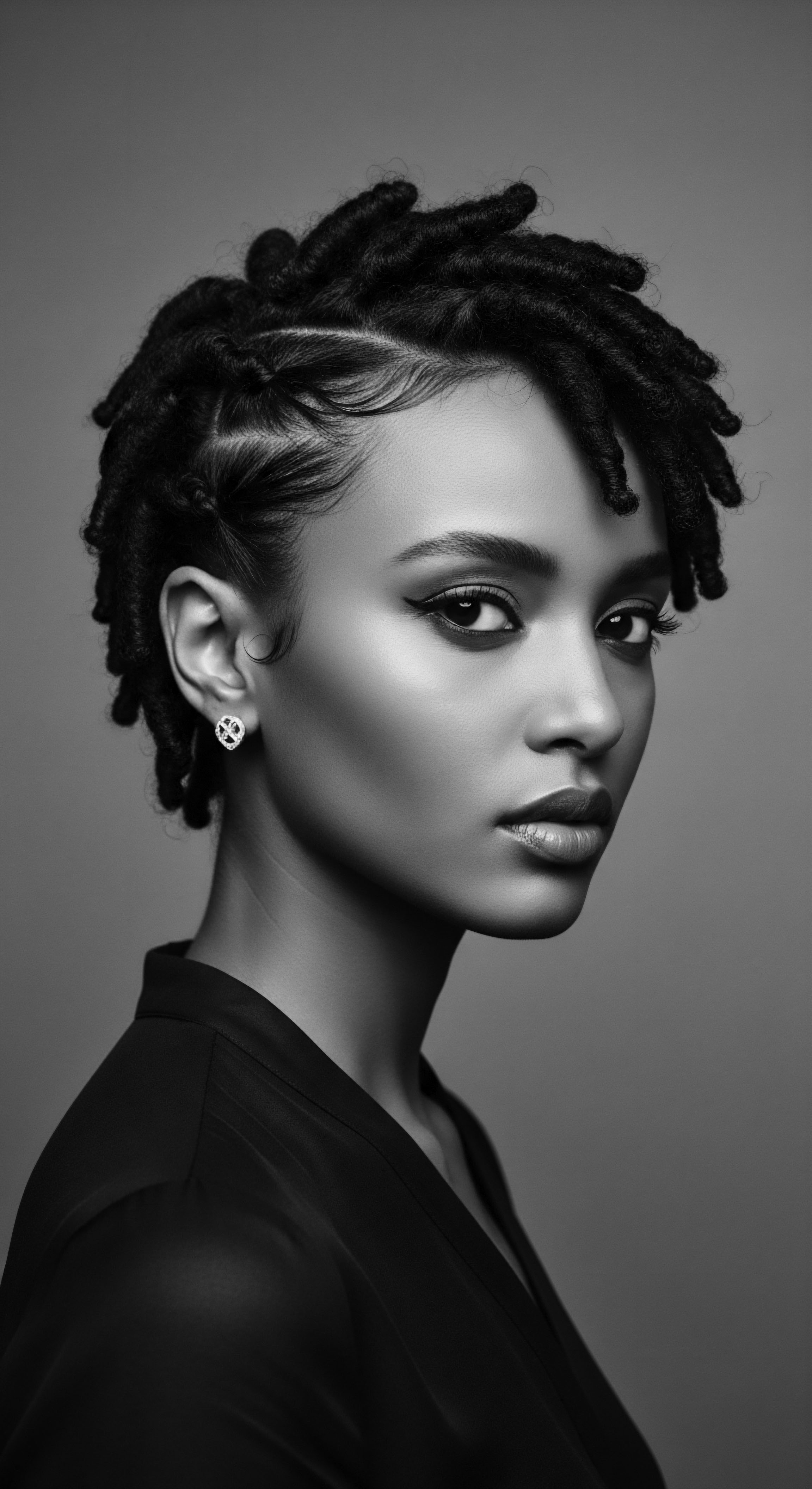
Hair’s Growth Cycle and Ancestral Rhythms
The hair growth cycle—comprising the Anagen (growth), Catagen (transition), and Telogen (resting) phases—is universal across all human hair types. Yet, the unique architecture of textured hair can sometimes influence the perception of its growth. Due to the pronounced coiling, textured hair experiences significant “shrinkage,” meaning its apparent length is considerably less than its actual length when fully stretched.
This optical illusion has historically led to misconceptions about hair growth rates within Black communities, often prompting practices aimed at elongation. Ancestral hair care, however, understood the natural rhythm of growth and shrinkage, celebrating the hair’s innate density and volume rather than striving for lengths that defied its biological nature.
Environmental and nutritional factors, deeply intertwined with ancestral living, also played a part in the health and vitality of hair. Access to nutrient-rich diets, traditional plant-based oils, and clean water, alongside exposure to sunlight (which stimulates vitamin D production essential for hair health), would have influenced hair growth and strength for our ancestors. These historical realities underscore the holistic approach to hair care that has long been a part of heritage practices.
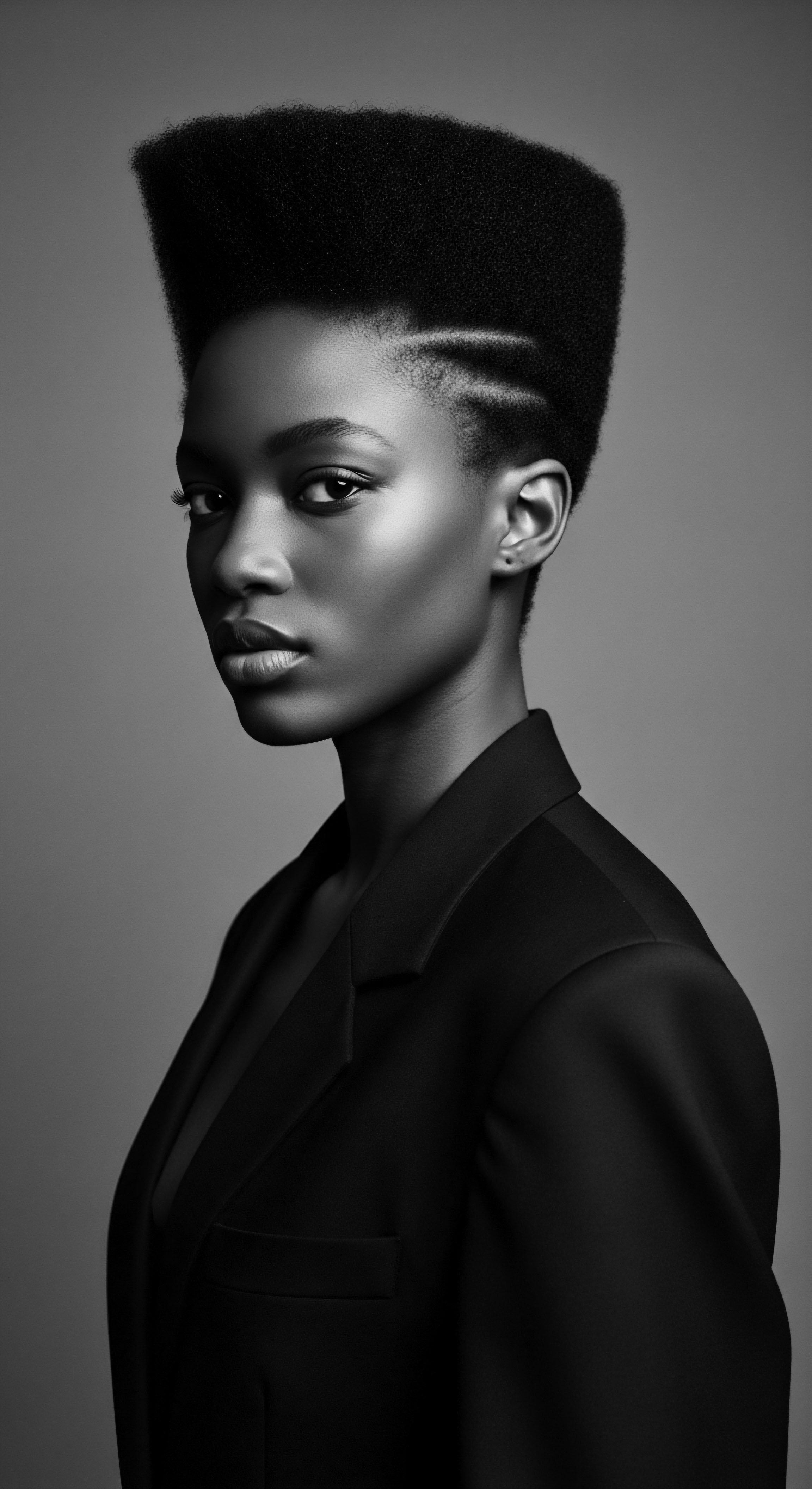
Ritual
The ritual of hair care for textured hair is not merely a routine; it is a living conversation with heritage, a tactile connection to the hands that styled generations before us. Each twist, braid, and coil speaks volumes of ancestral ingenuity, of techniques refined through centuries of cultural practices that understood, perhaps intuitively, the very anatomical distinctions we now scrutinize with scientific instruments. The way textured hair receives and holds these styles is directly informed by its unique structure.

Ancestral Roots of Protective Styling
Many of the protective styles celebrated today—braids, cornrows, locs—trace their origins directly to ancient African civilizations. These styles were not solely for adornment; they served vital practical and symbolic purposes. They protected the hair from environmental harshness, reduced tangling, and minimized breakage, all while communicating social status, marital status, age, and spiritual beliefs.
The ability of textured hair to interlock and hold these intricate patterns is a direct consequence of its coiling and the unique friction created by its cuticular scales. The inherent curl pattern allows strands to cling to one another, forming strong, lasting configurations that would simply not hold in hair of a straighter texture.
Ancient Egyptian practices, for instance, highlight this deeply held understanding. While depictions sometimes show straight hair, archaeological findings and historical accounts suggest a wide range of hair textures among ancient Egyptians, including those with “wild wavy, loose, medium to tight curls,” much like contemporary Ethiopians. They used various styling methods, including intricate braids and twists, often incorporating human hair extensions or sheep’s wool to add volume and length.
These extensions, held with plant-based waxes and resins, demonstrate an early, sophisticated understanding of how to manipulate and secure textured hair. The meticulous care of hair and the use of wigs were also highly symbolic, often signifying social status and even magical power.
Styling textured hair is a purposeful act, a continuation of ancestral practices that recognized and worked with the unique anatomical properties of coiled strands.
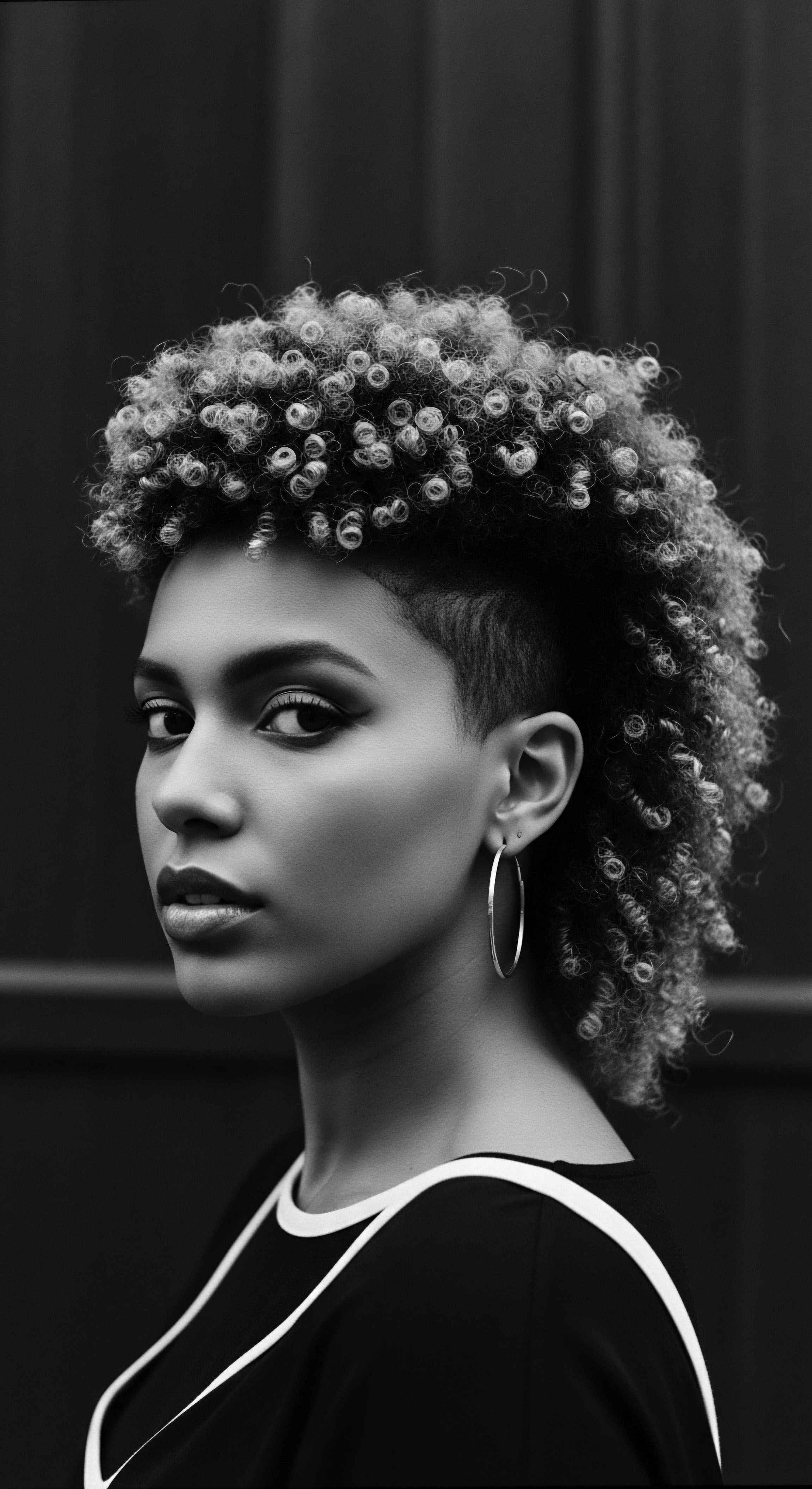
Techniques and Tools for Honoring Hair’s Heritage
The methods used for styling textured hair often reflect an innate recognition of its anatomical traits. Techniques like finger coiling, twisting, and braiding work with the hair’s natural curl pattern, encouraging definition and clumping. These methods, passed down through families and communities, intuitively manage the hair’s propensity for dryness and breakage, ensuring moisture is sealed in and tangles are minimized. The tools used in these practices, from ancient combs crafted from wood or bone to modern wide-tooth combs, are designed to navigate the hair’s natural coils gently, respecting its inherent structure.
Consider the contrast:
| Traditional Styling Practices (Heritage) Braiding and Twisting for protection and communication. |
| Anatomical Understanding The natural interlocking capability of tightly coiled fibers. |
| Traditional Styling Practices (Heritage) Sectioning Hair for manageability during styling. |
| Anatomical Understanding Acknowledging the density and varied curl patterns requiring systematic handling. |
| Traditional Styling Practices (Heritage) Oiling and Greasing the Scalp and Hair to maintain moisture. |
| Anatomical Understanding Addressing the challenge of sebum distribution due to helical growth. |
| Traditional Styling Practices (Heritage) These practices showcase an enduring wisdom, working harmoniously with textured hair's distinctive physical characteristics. |
The Civil Rights Movement in the United States brought a powerful resurgence of natural hairstyles, with the Afro becoming a symbol of Black pride and defiance against Eurocentric beauty standards. This shift was not merely political; it was a profound cultural reclaiming of hair’s anatomical truth, allowing its natural form to be celebrated publicly. Icons like Angela Davis popularized the Afro, which itself is a direct visual manifestation of the unique volume and density possible with tightly coiled hair, supported by its elliptical follicle and the way individual strands interlock to create a voluminous halo.
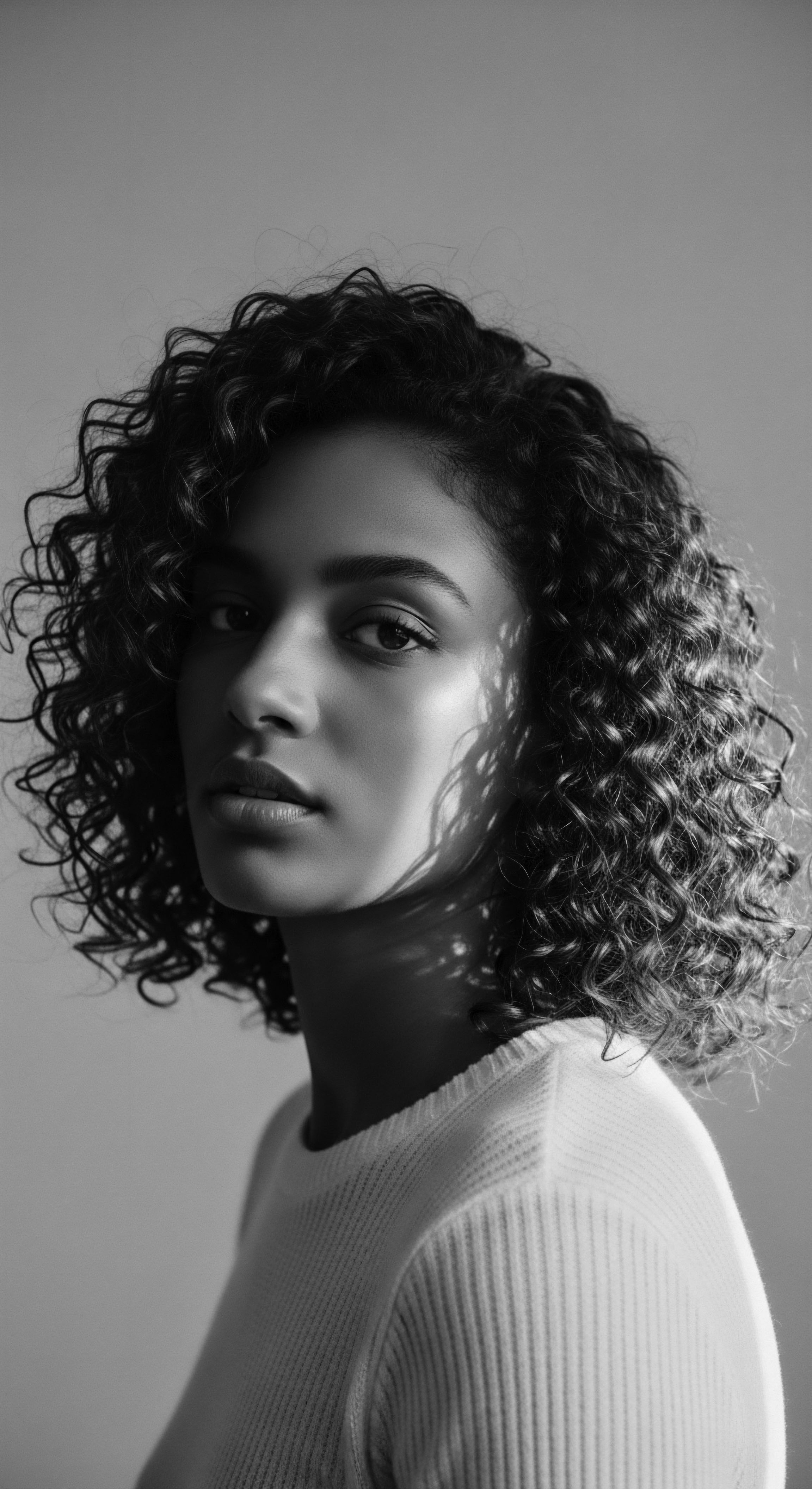
Heat and Chemical Interventions ❉ A Historical Perspective
Historically, the desire for hair that resembled straighter textures often led to practices that were anatomically challenging, sometimes damaging. Chemical relaxers, for instance, work by permanently altering the hair’s disulfide bonds within the cortex, breaking down the very structures that create the coils. This process, while offering a different aesthetic, often compromises the hair’s integrity, leading to dryness and breakage, particularly for textured hair due to its already fragile nature.
The history of chemical straightening in the African diaspora is deeply intertwined with societal pressures and the concept of “good hair,” which historically privileged looser curls or straight hair. Understanding the anatomy of textured hair—its delicate cuticle, its complex cortical structure, and its tendency towards dryness—reinforces the importance of mindful care, whether choosing to wear it in its natural state or to alter it with chemical processes.

Relay
The legacy of textured hair care, its traditions and innovations, is a living relay race across time, each generation passing wisdom and adapting practices to preserve the vitality of the strand. This continuum of care is deeply rooted in an intimate understanding of textured hair’s unique anatomical needs, an understanding that has evolved from ancestral observation to contemporary scientific inquiry.

Building Personalized Regimens ❉ Ancestral Blueprint to Modern Care
Crafting a regimen for textured hair is an act of deep reverence, a personalized approach guided by insights gleaned from both ancient wisdom and modern scientific understanding. The anatomical reality of textured hair, with its often raised cuticle and curvilinear path, renders it more prone to moisture loss and tangling. This inherent dryness is why traditional practices often emphasized frequent oiling and conditioning. For instance, many ancestral communities relied on natural emollients and herbs to keep hair supple.
The Zulu people, for example, traditionally used various natural elements in their beauty rituals, often drawing upon plants and minerals available in their environment. While specific hair care traditions might be less widely documented in minute detail compared to some other aspects of Zulu culture, the broader emphasis on hair as a symbol of identity, status, and fertility (for women, hair was allowed to grow long as a sign of fertility) meant its careful tending was paramount. Such practices, though perhaps not articulated in scientific terms, were effective in mitigating the dryness inherent in coiled hair.
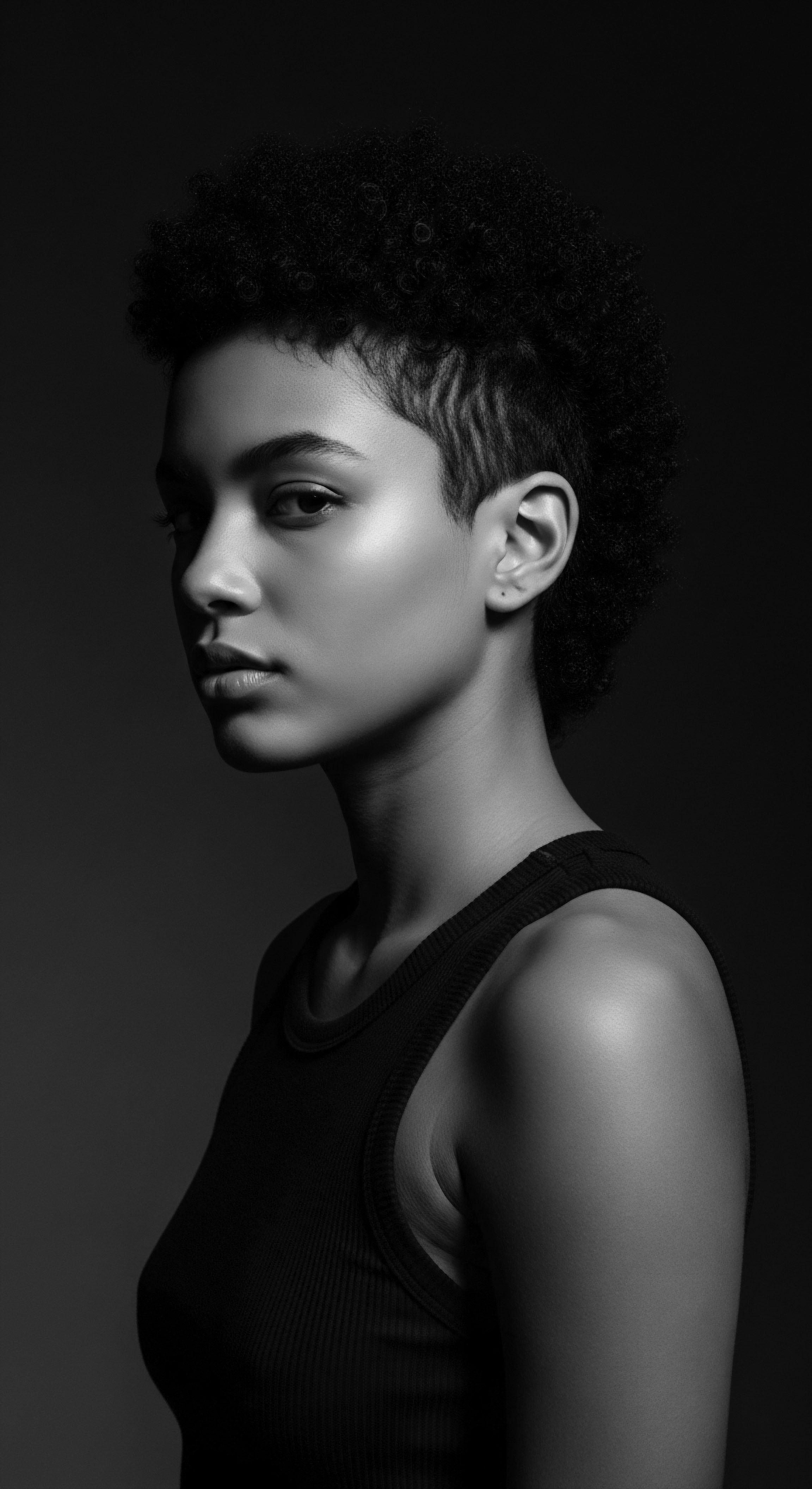
What Ancient Ingredients Speak to Hair’s Structure?
Many traditional ingredients used across the African continent and diaspora intrinsically address the anatomical needs of textured hair. They offer solutions for cleansing, moisturizing, and protecting, often with anti-inflammatory or strengthening properties. These natural components, rich in fatty acids, vitamins, and antioxidants, work in harmony with the hair’s structure.
- Shea Butter ❉ A staple from West Africa, its rich emollient properties deeply penetrate the hair shaft, providing lubrication to the cuticle layers and helping to seal in moisture, counteracting the natural dryness.
- Coconut Oil ❉ Known for its ability to penetrate the hair shaft, it can strengthen the cortex and reduce protein loss, especially relevant for textured hair which can be more susceptible to breakage.
- African Black Soap ❉ A traditional cleanser, it offers gentle yet effective purification without stripping the hair’s essential oils, preserving the scalp’s delicate balance and the hair’s moisture.

The Nighttime Sanctuary ❉ Preserving Heritage Through Protection
The practice of nighttime hair protection is a cornerstone of textured hair care, a tradition that predates modern products and speaks directly to the hair’s anatomical fragility. The coiling nature of textured strands means they are more prone to tangling and breakage when rubbing against abrasive surfaces like cotton pillowcases. Recognizing this, our ancestors, and indeed many communities today, instinctively sought methods to shield their hair during sleep.
The use of bonnets and head wraps, often made from smooth, protective fabrics, offers a direct defense against friction, preserving the hair’s delicate cuticle and maintaining moisture. This simple ritual, passed down through generations, is a living testament to the ancestral understanding of hair preservation.
The historical emphasis on covering and styling hair, sometimes for protection or modesty, also highlights a deep cultural significance that complements the anatomical understanding. For instance, in many West African cultures, headwraps are not only practical for protecting hair from the elements but also carry profound symbolic weight, signifying spiritual devotion, social status, or even mourning. This duality of function—anatomical protection and cultural expression—is a powerful aspect of textured hair heritage.
| Anatomical Vulnerability Cuticle Lift and Dryness |
| Ancestral Protective Practice Regular application of natural oils and butters to seal moisture. |
| Anatomical Vulnerability Breakage Due to Coiling |
| Ancestral Protective Practice Protective styles like braids and twists to minimize manipulation. |
| Anatomical Vulnerability Friction Damage During Sleep |
| Ancestral Protective Practice Use of protective head coverings or smooth sleeping surfaces. |
| Anatomical Vulnerability Ancestral wisdom intuitively provided solutions for the inherent challenges posed by the unique anatomy of textured hair. |
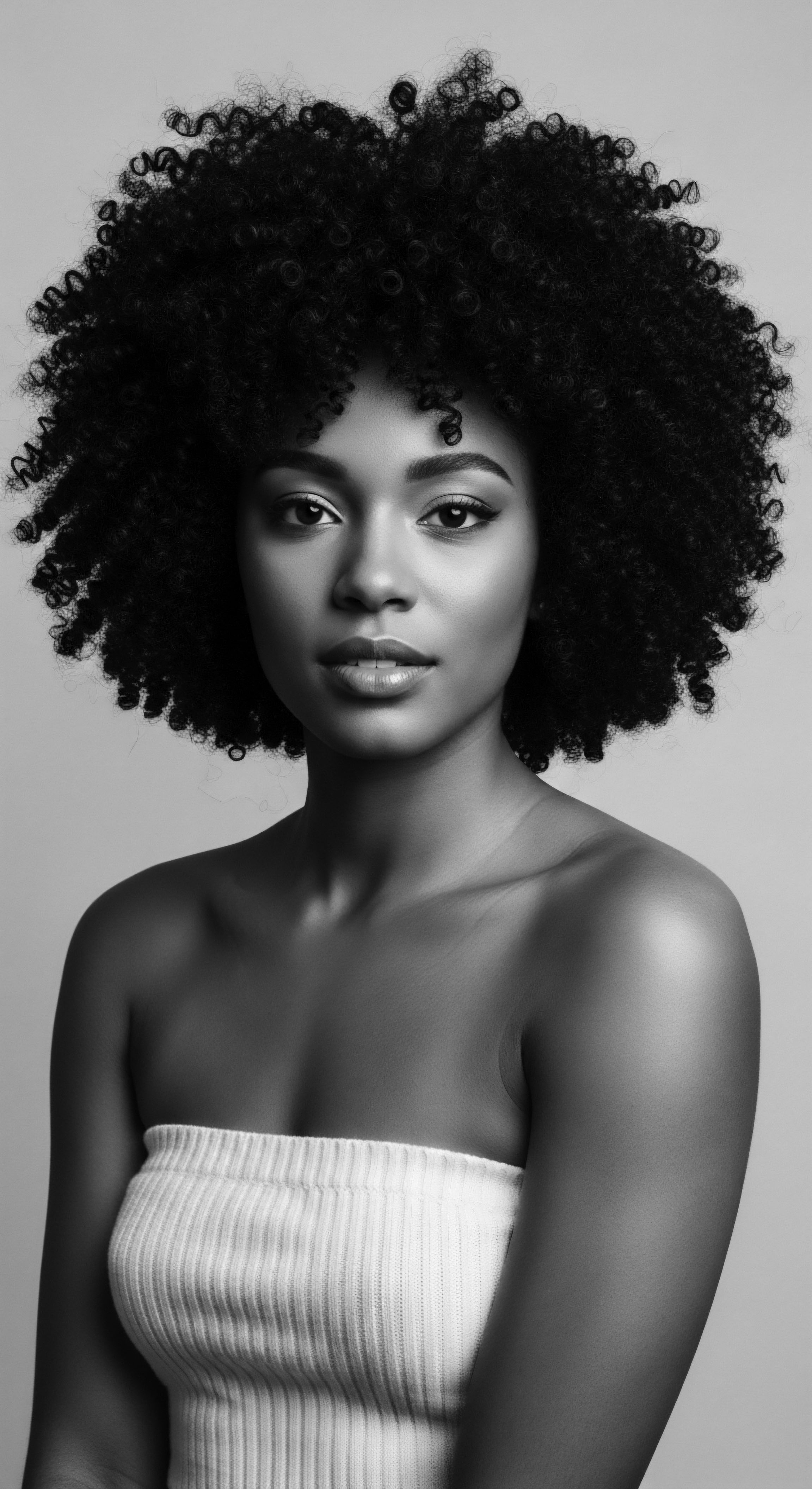
Holistic Influences on Hair Health ❉ A Tapestry of Well-Being
The wellness of textured hair extends beyond topical applications, drawing from holistic philosophies that have long been woven into ancestral practices. A vibrant scalp, the soil from which the hair grows, is central to healthy hair. Traditional wellness perspectives often recognized the interplay between diet, stress, and environmental factors on bodily health, including the hair and scalp.
Hydration, through internal water intake and external moisturizing, is paramount for textured hair, given its predisposition to dryness. The cellular health of the hair follicle, where the hair itself is formed, relies on systemic well-being.
The challenge of Central Centrifugal Cicatricial Alopecia (CCCA), a form of hair loss predominantly affecting Black women, serves as a poignant contemporary example of the interplay between anatomical predisposition, historical styling practices, and the need for holistic understanding. While the precise causes are complex, studies suggest that practices such as chemical relaxing, heat styling, and tight braiding, when not applied with proper care, can contribute to the development of this condition. This reality underscores the necessity of marrying anatomical knowledge with respectful, heritage-informed hair care, urging a return to methods that honor the hair’s natural state while acknowledging modern choices.
The hair’s journey, from root to tip, embodies a profound narrative of adaptation and resilience, a testament to ancestral care and enduring spirit.

Reflection
Our contemplation of textured hair’s distinguishing anatomical characteristics deepens into a profound appreciation for its enduring heritage. Each curl, every coil, is a living echo, a testament to the evolutionary journey of our ancestors and the intricate wisdom they cultivated. The elliptical follicle, the unique architecture of the cuticle and cortex, the inherent density – these are not mere biological facts.
They are components of a story etched in the very fabric of identity, a story of adaptation, beauty, and steadfastness in the face of shifting currents. This journey through the scientific and the sacred, the ancient and the contemporary, reaffirms that textured hair carries within it a soul, a spirit that connects us to those who came before, reminding us that care for our hair is indeed care for our deepest lineage.
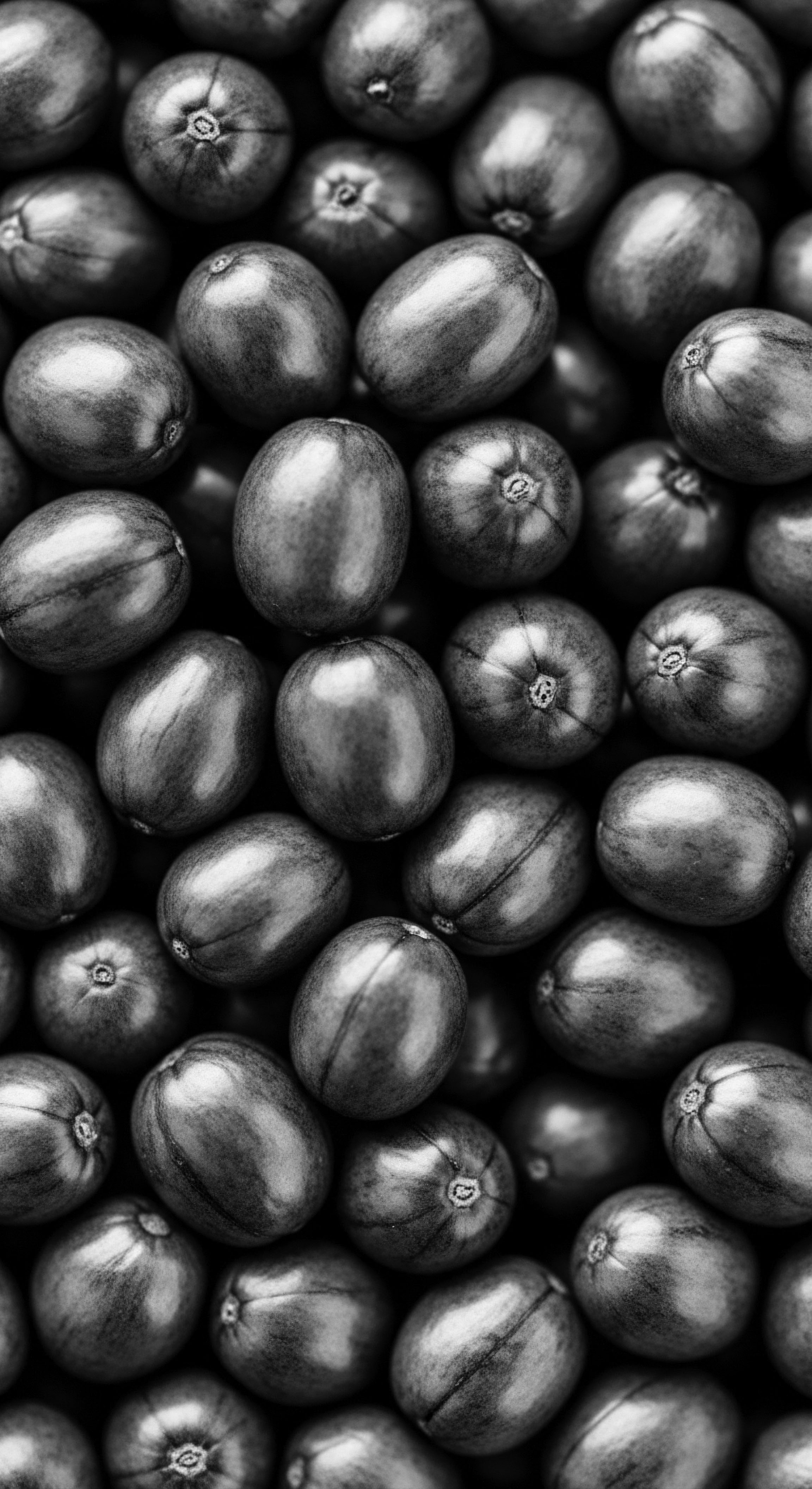
References
- Caffrey, Cait. “Afro-textured hair.” EBSCO Research Starters, 2023.
- Dadzie, O. E. Lasisi, T. & Jablonski, N. G. “The Anthropology of Human Scalp Hair.” Dermatoanthropology of Ethnic Skin and Hair, Springer International Publishing, 2017.
- Jablonski, Nina G. & Chaplin, George. “The Evolution of Skin Pigmentation and Hair Texture in People of African Ancestry.” The African Diaspora ❉ A 21st Century Perspective, Springer, 2018.
- Knight, Ian. “The Disembowelling Controversy.” Anglo Zulu War Historical Society, 2008.
- Lasisi, Tina. “A Most Peculiar Parasol ❉ Exploring Thermoregulation Through Human Hair Curl.” Temperature, vol. 11, no. 1, 2024, pp. 1–3.
- Lasisi, Tina, et al. “High-Throughput Phenotyping Methods for Quantifying Hair Fiber Morphology.” Scientific Reports, vol. 11, June 2021.
- Lasisi, Tina, et al. “Human scalp hair as a thermoregulatory adaptation.” PNAS, vol. 120, no. 24, 2023, pp. e2301760120.
- Langa, Mdumiseni L. “Some Gendered Practices in a Zulu Family ❉ A Feminist Perspective.” ResearchSpace@UKZN, 2016.
- Oladele, Deborah B. et al. “The Genomic Variation in Textured Hair ❉ Implications in Developing a Holistic Hair Care Routine.” Cosmetics, vol. 17, 2024.
- Robins, A. G. “Microscopic Characteristics Of Scalp Hair Subjected To Cultural Styling.” Clinical, Cosmetic and Investigational Dermatology, 2019.
- Rosalyn Beatty. “What methods did ancient Egyptians use to achieve straight and shiny hair? Did they use any hair products?” Quora, 2 Feb. 2024.
- Tina Lasisi. Science News, 29 Sept. 2022.
